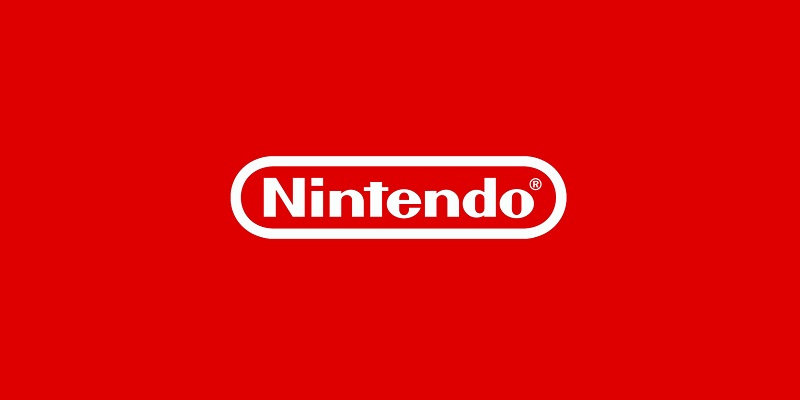Nintendo – 85th Annual General Meeting of Shareholders: approval ratings, CSR report, message from the President, Q&A
On June 27th, Nintendo held its 85th Annual General Meeting of Shareholders. It took place at 10AM JST at the Kyoto International Exhibition Hall “Miyako Messe” (Exhibition Hall 3, Floor 3), instead of Nintendo’s headquarters.
Shareholders were invited to vote on several matters:
- the distribution of surplus
- the Election of Nine Directors (excluding Directors Who Are Audit and Supervisory Committee Members)
Proposal 1: distribution of surplus
The company proposed a dividend of 85 Yen per share of common stock for a total of 98,961,095,640 Yen. Including the the interim dividend, that’s 120 Yen per share in total (down from 131 Yen per share the previous year).
Results of the vote: the proposal was approved by shareholders. 9,348,674 votes in favour (99.03%), 4,593 votes against, and 11,335 abstentions.
Proposal 2 Election of Nine Directors (excluding Directors who are Audit and Supervisory Committee Members)
The company proposed that the following Directors be elected or re-elected:
- Shuntaro Furukawa (re-election)
- Shigeru Miyamoto (re-election)
- Shinya Takahashi (re-election)
- Satoru Shibata (re-election)
- Ko Shiota (re-election)
- Yusuke Beppu (election)
- Chris Meledandri (re-election)
- Miyoko Demay (re-election)
- Kazuhiko Hachiya (election as Outside Director and Independent Officer)
Results of the vote: all Directors were elected/re-elected as initially proposed. The Approval rate for each Director is as follows:
- Shuntaro Furukawa: 8,743,745 votes in favour (92.60%), 571,217 votes against, 52,093 abstentions
- Shigeru Miyamoto: 9,082,442 votes in favour (96.18%), 231,206 votes against, 53,414 abstentions
- Shinya Takahashi: 9,086,983 votes in favour (96.23%), 226,665 votes against, 53,414 abstentions
- Satoru Shibata: 9,086,934 votes in favour (96.23%), 226,714 votes against, 53,414 abstentions
- Ko Shiota: 9,086,999 votes in favour (96.23%), 226,649 votes against, 53,414 abstentions
- Yusuke Beppu: 9,086,849 votes in favour (96.23%), 226,799 votes against, 53,414 abstentions
- Chris Meledandri: 7,164,790 votes in favour (75.87%), 2,189,091 votes against, 13,182 abstentions
- Miyoko Demay: 9,248,456 votes in favour (97.94%), 105,551 votes against, 13,057 abstentions
- Kazuhiko Hachiya: 9,264,069 votes in favour (98.11%), 89,814 votes against, 13,182 abstentions
As comparison, their approval ratings last year were as follows:
- Shuntaro Furukawa: 8,911,854 votes in favour (91.97%), 682,254 votes against, 47,356 abstentions
- Shigeru Miyamoto: 9,218,290 votes in favour (95.13%), 386,543 votes against, 36,637 abstentions
- Shinya Takahashi: 9,320,343 votes in favour (96.19%), 284,492 votes against, 36,637 abstentions
- Satoru Shibata: 9,320,431 votes in favour (96.19%), 284,404 votes against, 36,637 abstentions
- Ko Shiota: 9,320,420 votes in favour (96.19%), 284,415 votes against, 36,637 abstentions
- Yusuke Beppu: 9,260,021 votes in favour (95.56%), 344,814 votes against, 36,637 abstentions
- Chris Meledandri: 9,153,805 votes in favour (94.47%), 479,191 votes against, 8,470 abstentions
- Miyoko Demay: 9,587,014 votes in favour (98.94%), 45,991 votes against, 8,470 abstentions
Next, Nintendo updated their CSR Report. You will find it on these pages:
The new message from the president (Shuntaro Furukawa) was also shared. Here it is:
As an entertainment company that creates smiles, we aim to offer our unique and original brand of play that anyone and everyone can intuitively enjoy.
To enable unique entertainment experiences, we place our dedicated video game platform business – integrating both hardware and software – at the center of everything we do. Under this development philosophy, we constantly aim to create unique products and services that everyone can enjoy, and that feel incredibly intuitive and fun to play, regardless of age, gender, or gaming experience.
With the dedicated video game platform business at our core, we express the appeal and value of Nintendo Switch 2 – paired with unique game offerings like the Super Mario titles – as an experience that can be enjoyed “All Together, Anytime, Anywhere.”
To continue invigorating our core business, our fundamental strategy is to expand the number of people who have access to Nintendo IP. Nintendo’s characters have been nurtured and grown hand in hand with the memories made by generations of consumers as they play our games. We are utilizing our characters to continue expansion into a broad range of areas, including visual content, mobile devices, theme parks and merchandise.
Through these initiatives, we aim to continually create points of contact with consumers, deepen their fondness for Nintendo IP, and ultimately spark their interest in our dedicated video game business.
In addition, we work to develop and maintain good, long-term relationships with each of our consumers. Nintendo Account plays a key role in those efforts as the connection point that spans platform generations and unites a variety of entertainment experiences, centered on our integrated hardware-software entertainment.
Based on our belief that the true value of entertainment lies in its uniqueness, Nintendo will strive to achieve sustainable growth and increase its corporate value by offering unique entertainment that plays to the company’s strengths, continuing to adapt to the times and cherishing the spirit of creativity.
We humbly ask you, our shareholders and investors, for your continued support.
Finally, there’s the usual Q&A session with investors. The full transcript is now available in Japanese on this page, and the official English translation is available on this page.
Here’s the list of questions:
Question 1: Can you elaborate on the future of your visual content business? Is there a possibility of producing new visual content based on Nintendo IP other than Mario and The Legend of Zelda?
Question 2: I feel that the release of the Nintendo Music smart device app has increased opportunities to engage with Nintendo’s music. Are you considering strengthening initiatives such as concerts and other live music events to further expand the value of Nintendo IP through music?
Question 3: It appears that the supply of Nintendo Switch 2 is not meeting demand, especially in Japan. Is this due to insufficient production volume, or was the demand forecast inaccurate?
Question 4: As a shareholder, I am pleased to see the company’s stock price at an all-time high. I believe this
favorable result is rooted in Nintendo’s unique corporate culture. How does the company intend to maintain and strengthen this culture going forward?
Question 5: I’d like you to go back to holding the Annual General Meeting of Shareholders on the Nintendo
campus, as was done in the past.
Question 6: Regarding the randomly selected drawings for Nintendo Switch 2 orders on My Nintendo Store, can you explain the reason for basing applications on users’ Nintendo Account information? From the company’s perspective, what worked well and what areas of the process need improvement?
Question 7: Are there any plans to utilize Nintendo IP for children’s education? Do you intend to continue developing products that stimulate creativity in children like Nintendo Labo, which used cardboard to make things?
Question 8: At the 84th Annual General Meeting of Shareholders, there was a question about visual impairment. As I am hearing-impaired, I feel that consideration for disabilities, including in how information is communicated, is very important. How do you address these issues from the product development stage, and how do you incorporate the opinions of those affected?
Question 9: Some companies offer online streaming of their shareholder meetings or accept questions from shareholders in advance. Does Nintendo have any plans to do something similar?
Question 10: In the past, Nintendo seemed to be managed by a very small number of inside corporate directors. Now, it feels like there is an increasing number of outside directors with diverse backgrounds. What roles do you expect from your outside directors? Specifically, I would like to hear about the new outside director candidate, Kazuhiko Hachiya, and Chris Meledandri, who is attending the meeting for the first time.
Question 11: How long does the company expect the business lifecycle of Nintendo Switch 2 to be?
Question 12: Nintendo Switch 2 has a higher price point than past platforms like the Family Computer system (Famicom). I am concerned that this might reduce opportunities for young children to engage with it. How will you address this issue?
Question 13: Can you share your daily approach to fostering a corporate culture that encourages free-thinking, and also speak to how you develop the next generation of talent?
Question 14: Although Nintendo has the basic strategy of expanding the number of people who have access to Nintendo IP, now that Nintendo Switch 2 has launched successfully, I think a new basic strategy or long-term vision is needed. What are the company’s thoughts on this?.
Question 15: Are you considering providing exclusive merchandise and services for core Nintendo fans, similar to the previous Club Nintendo, or developing fan community services?
Question 16: Nintendo Switch 2 has adopted a game card specification called the game-key card. There are opinions online that this is a hybrid between physical and digital software, and that physical software containing no full game data is not very appealing. I am concerned that, if titles from software publishers on game-key cards do not sell well as a result of adopting this format, these publishers might move away from Nintendo Switch 2. What are your thoughts on this?
Question 17: I am concerned that the improved performance of Nintendo Switch 2 will lead to higher game development costs, which in turn could result in higher software prices and ultimately a decrease in the gaming population. What measures are you considering to address this?
Question 18: Please explain the intended use for the land acquired next to the corporate headquarters.

